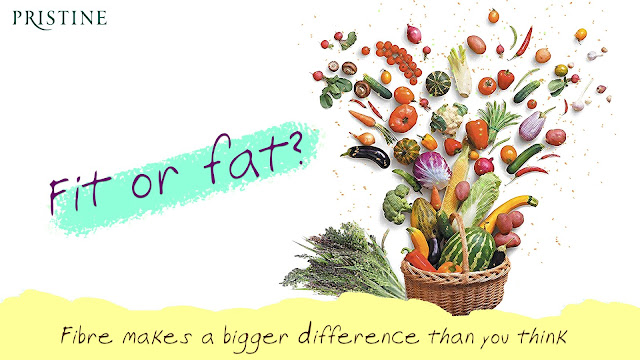Fat. It is not about how you look, but how you feel. — Pristine Organics
Athistulya, or obesity, is described in our ancient texts as a metabolic disorder in which fat tissue (meda) increases at the cost of depriving other essential tissues (dhatu) of energy. It is considered dangerous, its complications potentially fatal.
Combining modern findings with their own clinical experience, the authors Dr Ishrat Syed & Dr Kalpana Swaminathan break down the science of food and fat with everyday analogies and anecdotes, taking us on a lyrical journey through the body, explaining all we ever wanted to know about fat, and then some!
While the book starts off well, one quickly loses the plot in a maze of metaphors, medical terminology, and Shashi-Tharooresque verbosity. That said, the doctor-authors make many very valid and helpful observations about how our bodies function, within the Indian culture and context, our nutritional delusion compounded over the years, and the necessity to shift to a healthier diet.
Some interesting take outs from the book:
Obesity is a low-energy state
We knew that, right? Here’s why: metabolism, the process of converting the food we eat into energy, is disordered in obese people. Now identified and labeled Metabolic Syndrome, this state of obesity is a disease that’s on the rise in across the world. Alarmingly, India is amongst the worst hit.
Metabolic syndrome is linked to anhedonia
According to the authors, the most striking feature of Metabolic Syndrome is not obesity, but anhedonia, which means a lack of delight. Anhedonia goes deeper than unhappiness. It is also a loss of sentience and perception. Not getting enjoyment from things including food, that once elicited excitement, one tends to go on eating. Listlessly. Without thought. On and on.
Stress is one of the causes of obesity
Obese people often protest that they don’t overeat – and they may be right. But obesity does start with dietary excess. This then leads to insulin resistance, which prevents energy utilization.
So why do they overeat? When the brain is under stress, it releases a hormone called Corticotrophin Releasing Factor, CRF, which craves high-energy foods (high fat, high fat of course!). This hormone is also triggered off by appetizing food visuals, a rush of joy felt when hearing good news, during reunions, and of course high-stress situations, including that inevitable addition to our lives today, traffic! Evidence suggests that the brain ignores satiety signals from the gut, and continues to eat till the stomach is full. Not good.
What else triggers the appetite?
In the early 1900s, a doctor conducted a bizarre experiment: he measured the weight of a dying person and figured out that a body loses weight after death. No, it wasn’t the soul. A more recent discovery of the trillions of micro-organisms in our intestines solved the mystery.
Micro biome is the name given to all the bacteria, viruses, protozoa, archaea, helminthes (worms!), and so on, who call our intestines their home. Every person nourishes a different population of this micro biome, and they have a hotline to the brain. In other words, it is the micro biome in your gut that sends signals to the brain to stop eating. Or not! Obese micro biota needs more fats and sugars to flourish, so that’s what they demand of the brain. The trick here is to cultivate the right kind of flora, so they demand nutritious food, and you are weaned off the desire for your high-fat, high sugar fix.
Obesity is a disease
This cannot be stressed enough. Obesity is a disease, and must be treated as such. Recent data showed the prevalence of over 40% people with hypertension in a sample size of more than 5000 North Indians. The rest of India is not far behind. Scary, to say the least! Obesity is now inextricably associated with hypertension, and type 2 diabetes mellitus amongst adults in India. Sadly, this is often undiagnosed in over-weight people.
No short-cuts for weight loss
Obesity is not a state of mind, a cosmetic problem or a sign of poor self-control. So the best way to tackle it is to get it treated, by a doctor. Don’t fall for lab reports that tell you are ‘normal’. Remember that losing weight is not the same as losing ‘fat’.
If you are just over-weight, a quick karela or wheat-grass juice after the morning walk is not going to cut it. Not unless you change your diet for the rest of the day too. Stop food cravings, by reversing the obese micro biota back to normal flora in the gut. Just shift from a high fat, high sugar diet to a low- or medium- energy one 

Some tips to help you do that:
- If you have to grab a quick bite to keep you going, pick a banana over a biscuit
- Ditch your cardboard cereal and opt for a home-made one. We have umpteen traditional versions breakfast cereals, that take just a few minutes to prepare, and are so delicious!
- There’s nothing like an egg. If every child has one for breakfast, we would be free from malnutrition. It’s a great source of protein too, something that the Indian diet falls short of
- Snacks! Far from light and ‘snacky’, these high-fat, high sugar morsels are India’s biggest downfall. If you want to eat in between meals, try these healthy snacking tips
- Eat, don’t diet. Nothing encourages obesity more than skipping a meal. Any attempt at energy deprivation and the brain shuts down the insulin supply, increasing fat in the body. Anyone who has tried a fad diet will know deep down that they don’t work
- Nothing can replace physical exercise, so choose your activity and get off your butt
- Read the label. The more the ingredients on the label, the wiser it is to leave it where it belongs, on the shelf




Comments
Post a Comment